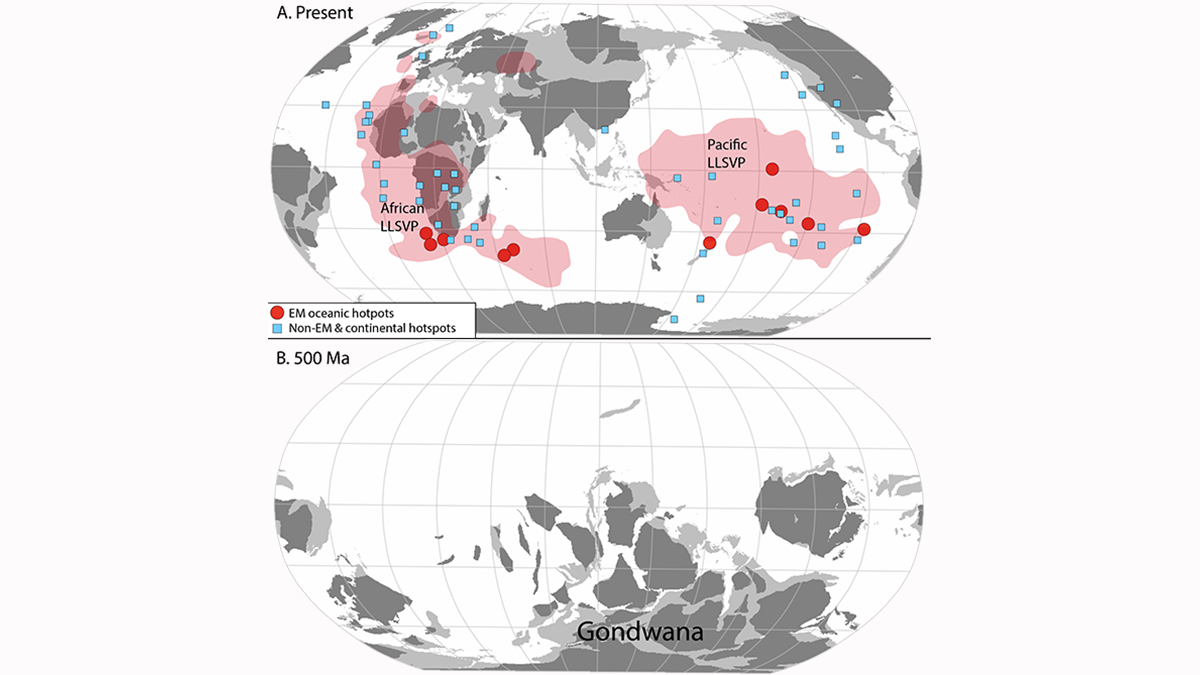Source: AGU Advances
Editors’ Highlights are summaries of recent papers by AGU’s journal editors.
About four decades ago, Hart [1984] observed that a significant number of active hot spots are located in the southern hemisphere. The cause of this hot spot distribution and associated mantle domain observed at the Earth surface has been enigmatic. The southern hemisphere shows two Large Low-Shear-wave-Velocity-Provinces (LLSVPs) at the core mantle boundary from which the hot spots originate. Jackson and Macdonald [2022] argue the majority of these southern hemisphere hot spots contain recycled continental material (EMI-type) and they present the novel idea that the concentration of the LLSVPs and enriched mantle in the southern hemisphere is related to Neoproterozoic subduction around Gondwana that includes continental material. The Gondwana supercontinent was concentrated in the southern hemisphere. Recycled continental material shows up at these hot spots, the authors argue, because only in the Neoproterozoic the mantle conditions became conducive to the subduction of continental material. This implies that the continental crust can make its trip to the core and come back as part of enriched mantle in about 600 Myr. This is contrary to the general assumption that these mantle enrichment are ancient, i.e., billions of years in the making, putting the dynamics in Chemical Geodynamics. The companion Viewpoint by White [2022] emphasizes some of the potentially far-reaching implications of the Jackson and Macdonald model.
Citation: Jackson, M. G., & Macdonald, F. A. [2022]. Hemispheric geochemical dichotomy of the mantle is a legacy of austral supercontinent assembly and onset of deep continental crust subduction. AGU Advances, 3, e2022AV000664. https://doi.org/10.1029/2022AV000664
—Vincent Salters, Editor, AGU Advances

